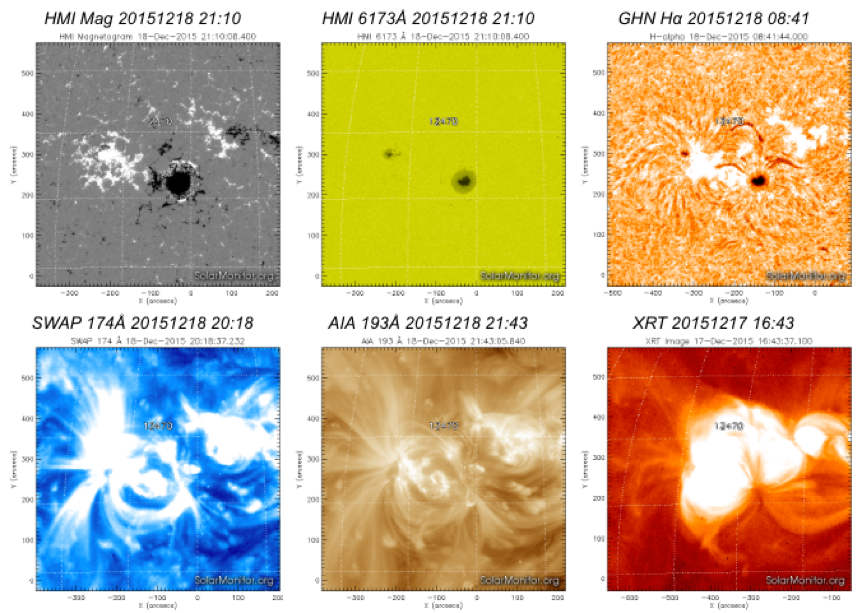Sunspot Band6: Difference between revisions
No edit summary |
|||
| Line 53: | Line 53: | ||
* [[Sunspot_Band6_SingleDish_for_CASA_5.1]] | * [[Sunspot_Band6_SingleDish_for_CASA_5.1]] | ||
* [[Sunspot_Band6_Feathering_for_CASA_5.1]] | * [[Sunspot_Band6_Feathering_for_CASA_5.1]] | ||
* [http://almascience.org/alma-data/science-verification/tutorial-alma-solar-science-verification-data CASA 4.7 (All parts as PDFs on the Science Portal)] | |||
==How to use this casaguide== | ==How to use this casaguide== | ||
The scripts that include all commands shown in the above tutorials are provided from the download sites described in [[#Obtaining the Data]]. After downloading the scripts, you can carry out the reduction processes along the tutorial. The detail and usage of the scripts are described in each above tutorial. | The scripts that include all commands shown in the above tutorials are provided from the download sites described in [[#Obtaining the Data]]. After downloading the scripts, you can carry out the reduction processes along the tutorial. The detail and usage of the scripts are described in each above tutorial. | ||
Revision as of 22:26, 19 July 2024
Last checked on CASA Version 6.5.4
Science Target Overview

These Science Verification observations have been taken with the aim of testing ALMA solar capability at Band6 (239 GHz, 1.25mm), on 18 December 2015 in the 6th solar commissioning campaign. The target of the observations is the preceding sunspot of the active region “AR 12470.” The summary of the active region can be seen in this “SolarMonitor” webpage. The preceding sunspot of AR12470 is the biggest sunspot in the solar disk on the observing day, and its magnetic polarity is negative. In the active region, two “C” GOES-class flares occurred on the observing day, but the time range of the observations does not cover the flares.
ALMA Data Overview
This CASA Guide demonstrates the calibration and imaging of both single dish and interferometric data, and the feathering of these images together.
The ALMA scientific commissioning observations on the sunspot in Band6 were carried out on December 18th, 2015. The observations consist of two individual datasets (ASDMs) as follows:
- uid___A002_Xae00c5_X2a8d
The first dataset was taken with the heterogeneous array that consists of 21 12m-antennas and 9 7m-antennas. During this solar observation, all the antennas were connected to the 64-channel correlator. Hence, the combine process between the data obtained with 12m- and 7m- arrays is not needed. The spectral setup for the observation is the Time Domain Mode (TDM) with 128 channels per one spectral window (2GHz), and the frequency of the first Local Oscillator (LO1) is set at 239 GHz (the same as the default observing frequency of the solar observations with Band6 in Cycle 4). The bandpass calibrator is J1924-2914, and the flux and phase calibrator is J1733-1304 (NRAO 530). - uid___A002_Xae00c5_X2e6b
The second dataset was taken with the Total Power (TP)-array using the fast-scanning mode. The field of view of the map is a circle with 2400” diameter (Full Sun). The frequency of the LO1 is the same as the previous dataset, but no correlator is used. The dataset consists of the output of the square-law detectors at the four basebands. Therefore, the number of the channels per one spectral window is one.
The following statement should be included in the acknowledgment of papers using the datasets listed above:
This paper makes use of the following ALMA data: ADS/JAO.ALMA#2011.0.00020.SV. ALMA is a partnership of ESO (representing its member states), NSF (USA) and NINS (Japan), together with NRC (Canada) and NSC and ASIAA (Taiwan), and KASI (Republic of Korea), in cooperation with the Republic of Chile. The Joint ALMA Observatory is operated by ESO, AUI/NRAO and NAOJ.
Caution: The single-dish images and feathering images in the solar SV data packages (ex. Sunspot_Band6_ReferenceImages.tgz) were not applied the re-scaling to the single-dish data (see Sunspot_Band6_SingleDish_for_CASA_6.5.4#Rescaling_after_Imaging). Please do not use the reference image for your science.
Obtaining the Data
To download the data, click on the regional closest to your location:
East Asia
Europe
North America
Here you find three gzipped tar files, which after unpacking, will create three directories:
- Sunspot_Band6_UncalibratedData (1.5 GB) - The raw data files in ALMA Science Data Model (ASDM) format, and the reduction and imaging scripts for CASA 4.7.
- Sunspot_Band6_CalibratedData (2.7 GB) - The fully-calibrated u-v data and SD data, ready for image synthesis, and the imaging scripts for CASA 4.7.
- Sunspot_Band6_ReferenceImages (9 MB) - The FITS files of the synthesized image obtained with the 12m+7m array, full-sun map obtained with TP-array, and combined image from the synthesized image and full-sun map.
To see which files you will need, read on below.
Data Reduction Tutorial
This guide has been split into four sections. For these tutorials, the Analysis Utilities package is required.
- Sunspot_Band6_Calibration
This section steps you through inspection and calibration of the interferometric visibility (u-v) data. To complete this part, you will need the data in the Sunspot_Band6_UncalibratedData directory. - Sunspot_Band6_Imaging
This section focuses on constructing images from the fully calibrated visibility data. If you wish to skip calibration and proceed directly to this part of the tutorial, you may use the fully-calibrated visibility data in the Sunspot_Band6_CalibratedData directory. - Sunspot_Band6_SingleDish
This section steps you through calibration and imaging of the Total Power array data. To complete this section, you will need the data in the Sunspot_Band6_UncalibratedData directory. - Sunspot_Band6_Feathering
This section focuses on the “feathering” process to combine the synthesized image and single-dish map. To complete this section, you will need the interferometric images from Section 2 and the single dish images from Section 3.
Older versions of these guides are available here:
- Sunspot_Band6_Calibration_for_CASA_5.1
- Sunspot_Band6_Imaging_for_CASA_5.1
- Sunspot_Band6_SingleDish_for_CASA_5.1
- Sunspot_Band6_Feathering_for_CASA_5.1
- CASA 4.7 (All parts as PDFs on the Science Portal)
How to use this casaguide
The scripts that include all commands shown in the above tutorials are provided from the download sites described in #Obtaining the Data. After downloading the scripts, you can carry out the reduction processes along the tutorial. The detail and usage of the scripts are described in each above tutorial.